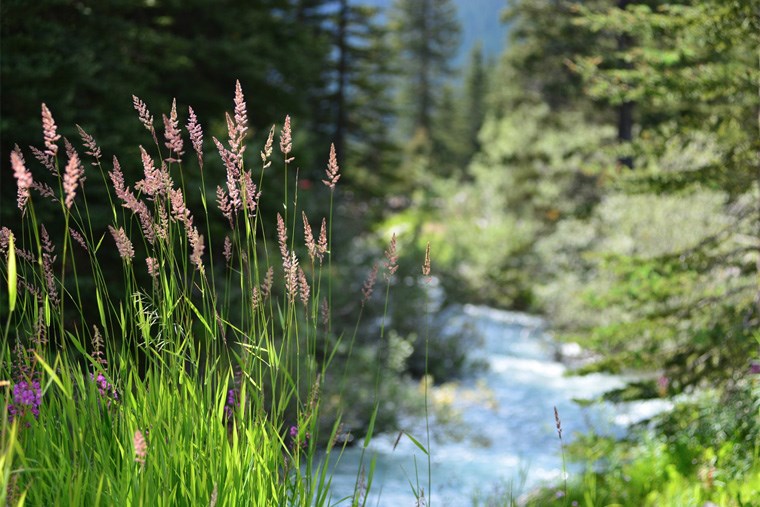Rocky Mountain House National Historic Site is an archaeological site located on traditional Niitsitapi lands in Alberta. The site engages visitors with its historical significance to the fur-trade era and cultural importance for First Nations and Metis peoples. This historical site is made possible through efforts by local First Nations and Métis communities as well as cooperation with local governments to preserve and honour the area, hoping to provide visitors with an enriching, educational experience.
The site is on Treaty 6 and Metis lands, situated between the North Saskatchewan and Clearwater rivers, and historically has held special significance as a gathering place for First Nations and Métis peoples, as well as being a home to several fur-trading posts, a burial ground, and having a link with the famous explorer David Thompson. The park originally opened to the public in 1978 and is largely sustained by Parks Canada, the Confluence Heritage Society, and Metis Local 845. The location of Rocky Mountain House National Historic Site features beautiful views of the North Saskatchewan River Valley, undisturbed forests and rivers, and adjacent historic settlements from different eras.
Rocky Mountain House National Historic Site affords visitors plenty of educational, cultural, and viewership opportunities that should not be missed. Visitors can enjoy touring the archaeological evidence of four fur-trading posts and pay respects to the burial ground from the era, as well as learn from the various artifacts uncovered from both pre-contact and fur-trading eras. Moreover, visitors can expect to receive information about the Niitsitapi, Kutenai, and Metis cultures which historically inhabited and to this day maintain a vital presence in the region. Rocky Mountain House National Historic Site also features picturesque landscapes, wildlife, and settlements which visitors can tour through the available hiking trails on-site.
While some restrictions now apply to the site’s activities due to COVID-19, visitors can still engage in memorable tourism through activities such as bison viewing, the 1967 Canoe Race Display, the historical replica fur-trade post and artifacts at the visitor’s centre, outdoor experiences such as overnight camping, and the gift shop which features local Indigenous craftwork. Rocky Mountain House National Historic Site currently requires visitors to wear facial masks and encourages social distancing as a precaution for the pandemic. Opportunities such as guided tours and high-touch exhibits could become available again should the COVID-19 situation improve throughout the summer.
Overall, Rocky Mountain House National Historic Site is an immersive and educational experience for visitors who wish to engage with local Indigenous cultures and the history of the fur-trade era. Visitors should take time to appreciate the archaeological evidence, cultural significance, and conserved landscapes of the region during their time. For more information on the site, visit the Government of Canada’s informative page.
Sierra Pearce is a freelance writer and a contributor to Great West Media. This story was written for the Hot Summer Guide advertising feature. It is not written by and does not necessarily reflect the views of the editorial staff.




